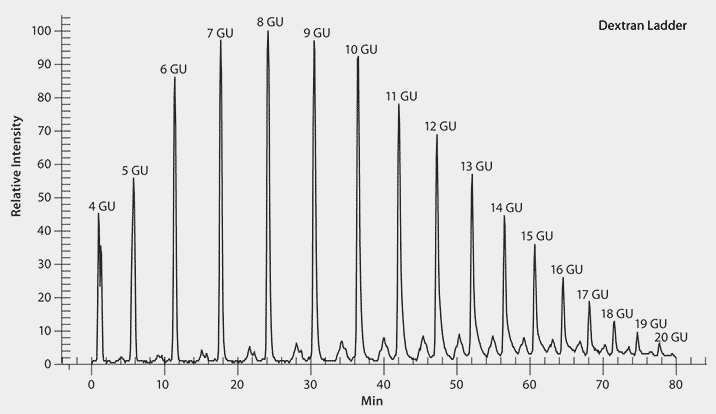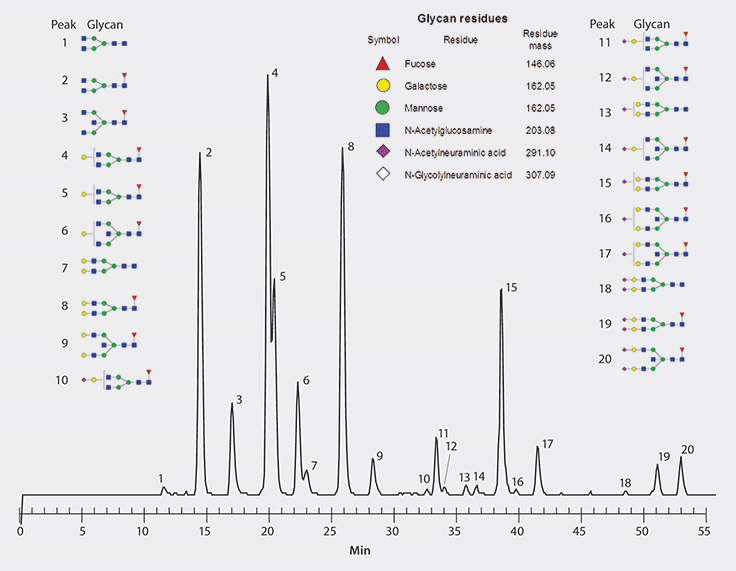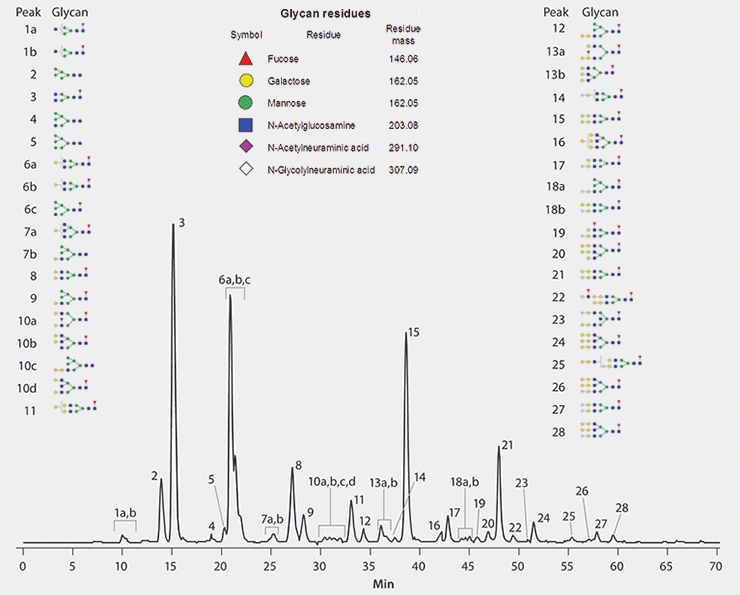Empowering Biochemists to Analyze Glycoproteins with Exceptional Reproducibility
BIOshell™ Glycan HPLC Columns
Protein glycosylation is one of the most common and structurally diverse types of protein post translational modifications (PTM). The particular pattern of glycosylation as well as the location of the PTM has been shown to play a major role in numerous physiological and pathological reactions such as cellular development, immunity, blood clotting and apoptosis. Thus, understanding protein glycosylation is essential in elucidating a glycoprotein's cellular function.
Glycoprotein analysis can be challenging, however, because it involves the identification of complex N-linked and O-linked sugar molecules that are often quite structurally similar. Hydrophilic interaction liquid chromatography (HILIC) is a proven technique for the separation and quantitation of isolated glycans under native conditions or after their derivitization with fluorescent labels.
BIOshell™ Glycan HPLC Columns are specifically engineered to deliver fast, high resolution, reproducible glycan identification using HILIC chromatography. Benefits of using Fused-Core® BIOshell™ Glycan HPLC Columns for glycoprotein analysis are as follows:
- Increased resolution, faster separations, and lower back pressure: Based upon Fused-Core Particle Technology, BIOshell™ HPLC columns offer significant performance benefits over popular columns based on totally porous particles.
- Excellent reproducibility: Quality Control testing requires tight retention time and peak width specifications ensuring lot to lot reproducibility.
- Complimentary products: We offer all of the reagents and consumables needed for each step in glycoprotein analysis: release, labeling, cleanup and analysis, as listed in Table 1.
Applications using BIOshell™ Glycan HPLC Columns

Figure 1: Separation of a Procainamide Labeled Dextran Ladder
The dextran ladder is used as an external standard for the analysis of glycans by normal phase HPLC after fluorescent labeling. When analyzed on the BIOshell™ Glycan HPLC Column, this standard gives a characteristic ladder profile from monomeric glucose to approximately a 20-mers of glucose oligosaccharide. This ladder provides calibration reference points that can aid in identifying more complex glycans based upon retention characteristics.

Figure 2: Separation of Procainamide Labeled Human IgG Glycans
A sample of human IgG glycans was analyzed on a BIOshell™ Glycan HPLC Column resulting in the identification of 20 distinct peaks. Excellent separation as well as symmetrical peak shape can be observed in the chromatogram.

Figure 3: Separation of Procainamide Labeled Cetuximab Glycans
Cetuximab is a chimeric mouse-human IgG1 monoclonal antibody against the epidermal growth factor receptor. It is used to treat head and neck as well as colorectal cancers. The antibody is N-glycosylated both in the Fc and Fab regions, which have been shown to impact safety and quality of the drug. Thus, understanding glycosylation patterns is exceptionally important. As shown in this application report, the BIOshell™ Glycan column is able to elucidate the complex glycosylation of this biotherapeutic, allowing a better understanding of the drug’s efficacy.
Fused-Core is a registered trademark of Advanced Materials Technology, Inc.
To continue reading please sign in or create an account.
Don't Have An Account?